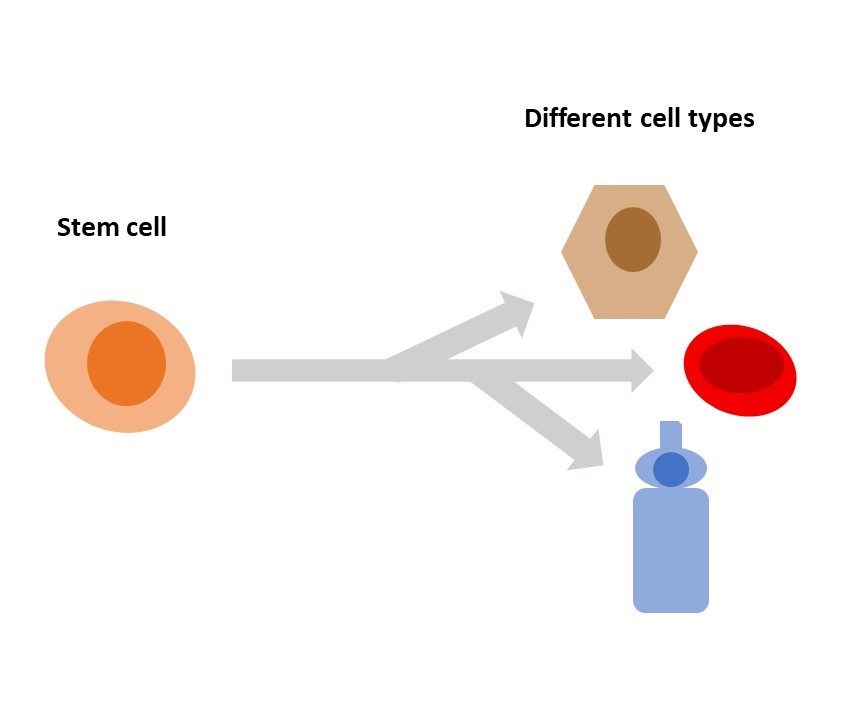[/image][=video]
[/video]
There are many types of stem cells. Generally, the term stem cell refers to a category of cells that generate various other cells (like skin, blood, heart, and muscular tissue cells) by reproducing and distinguishing in action to chemical signs. Totipotent stem cells appear at the earliest phase of advancement and are the only stem cells which can create embryonic stem cells and the placenta.
Bone marrow transplant (BMT) is an unique treatment for individuals with particular cancers or various other diseases. A bone marrow transplant includes taking cells that are usually located in the bone marrow (stem cells), filtering system those cells, and providing back either to the contributor (individual) or to an additional individual. The goal of BMT is to transfuse healthy bone marrow cells right into an individual after his/her own undesirable bone marrow has actually been treated to eliminate the uncommon cells.
The blood cells that make other blood cells are called stem cells. The most primitive of the stem cells is called the pluripotent stem cell.
It is the stem cells that are needed in bone marrow transplant. The objective of a bone marrow transplant is to treat numerous illness and sorts of cancer. When the dosages of radiation treatment or radiation needed to cure a cancer cells are so high that a person's bone marrow stem cells will certainly be permanently harmed or ruined by the treatment, a bone marrow transplant might be needed.
Medical Group
This procedure is usually called rescue. Replace bone marrow with genetically healthy working bone marrow to stop more damages from a hereditary disease process (such as Hurler's disorder and adrenoleukodystrophy). The risks and advantages must be evaluated in a comprehensive discussion with your doctor and specialists in bone marrow transplants before the procedure.
There are different sorts of bone marrow transplants relying on that the benefactor is. The various kinds of BMT include the following: The benefactor is the client himself or herself. Stem cells are taken from the client either by bone marrow harvest or apheresis (a process of collecting peripheral blood stem cells), icy, and after that provided back to the person after extensive therapy.
The benefactor shares the very same genetic type as the patient. Stem cells are taken either by bone marrow harvest or apheresis from a genetically matched contributor, normally a bro or sis. Other contributors for allogeneic bone marrow transplants may include the following: A haploid-identical match is when the benefactor is a parent and the hereditary suit goes to least half identical to the recipient.

Matching includes inputting human leukocyte antigen (HLA) cells. The antigens externally of these special leukocyte identify the hereditary makeup of a person's body immune system. There go to the very least 100 HLA antigens; nonetheless, it is believed that there are a few major antigens that identify whether a contributor and recipient suit.
Clinical research study is still exploring the duty all antigens play in the process of a bone marrow transplant. The even more antigens that match, the much better the engraftment of contributed marrow. Engraftment of the stem cells occurs when the given away cells make their way to the marrow and start making brand-new blood cells.
Stem Cell Therapy
All people function with each other to provide the finest opportunity for an effective transplant. The team is composed of the following: Healthcare providers that specialize in oncology, hematology, immunology, and bone marrow transplant.
Professionals that will help you meet your dietary needs prior to and after the transplant. They will certainly work very closely with you and your household. Experts who will assist you come to be strong and independent with movement and endurance after the transplantation. Chaplains who give spiritual care and support. Numerous various other group participants will review you before transplant and will certainly provide follow-up treatment as needed.

A complete case history and physical examination are done, consisting of several tests to review the patient's blood and organ functions (as an example, heart, kidney, liver, and lungs). A patient will often come into the transplant facility approximately 10 days before transplant for hydration, evaluation, placement of the central venous line, and various other prep work.
For an allogeneic transplant, an appropriate (cells typed and matched) contributor has to be available. Volunteer marrow benefactors are registered in numerous national and international computer registries.
Benefactor resources offered consist of: self, sibling, moms and dad or family member, nonrelated person, or umbilical cable from an associated or nonrelated person. There are national and international pc registries for nonrelated people and cable blood. Some member of the family may be keyed in as a result of the need to aid. These loved ones may or might not elect to have their kind signed up for use with other receivers.
Regenerative Therapy
Tests connected to his or her health, exposure to viruses, and hereditary analysis will certainly be done to figure out the level of the match. The benefactor will certainly be given directions on just how a bone marrow contribution will be made. As soon as a suit for a person needing a bone marrow transplant is discovered, after that stem cells will be collected either by a bone marrow harvest.
Or by an outer blood stem cell collection. This is where stem cells are collected from the circulating cells in the blood. Of both, peripheral blood stem cell contributions are now a lot more usual. Cable blood has currently been gathered at the time of a birth and kept for later usage.
Navigation
Latest Posts
Hormone Therapy around Muskegon, Michigan
Hormone Therapy servicing Muskegon
Perimenopause Treatment